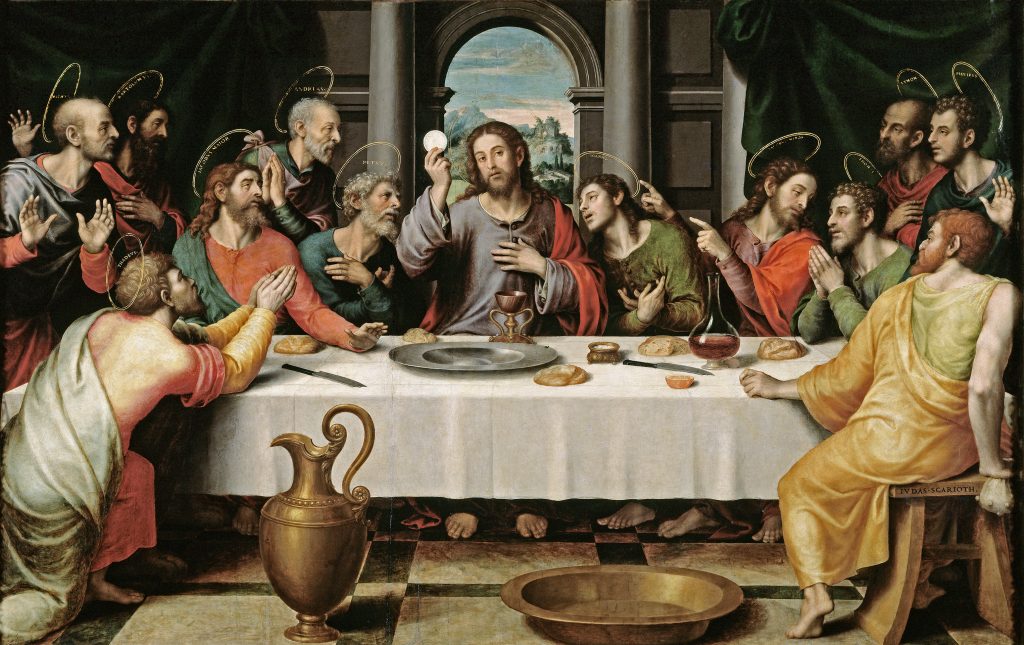
Lesson Objectives
- To read Genesis 1-12 with understanding.
- To learn the meaning of the first two covenants of salvation history - the Sabbath, and the covenant made with Noah.
- To begin to understand the "patterns" of biblical history.
II. How to Read Genesis
How are we supposed to read Genesis as modern Catholics?
We have to read Genesis on its own terms - which are religious, not scientific or historical in the modern, secular, rationalistic sense of the terms. Genesis wasn't written to be God's assigned textbook for science class or anthropology. We can learn a lot from the Bible about physics, evolution, geology, cosmology and the rest - but that's not what Genesis was written for.
Around the time of the Galileo controversy, an Italian historian, Cardinal Caesare Baronious, gave us a great sound-bite to sum up what we're saying: "The Scriptures tell us how to go to heaven - not how the heavens go."
Everything the Bible has to tell us - about everything from morals to history - is true. But it's true in the Bible's way of telling the truth, which is God's truth, religious truth. That's not a cop-out answer. You don't read a math book looking for religious truths. We can't assume to read this religious text in order to find mathematical and scientific proofs.
Scripture gives us religious history, religious truth, and it conveys that truth and history to us through symbols and figures and different literary styles.
Get used to this. This is how the Old Testament, especially, is written.
Read the seventh chapter of the Book Daniel: He describes 400 years of Israel's history in terms of four beasts, four ugly animals that oppress God's people, one after the other. Now, through research, we can see that these "beasts" each represent nations - Babylon, Medo-Persia, Greece and Rome - that oppressed Israel. Daniel is giving us solid history, but he's giving it to us through symbolic means.
So, we're not going to get too hung up in this class on whether God created the world in six 24-hour days, or whether the biblical account supports one of the theories of evolution. (Those interested in pursuing these subjects should check out Dr. Scott Hahn's One Holy Tribe, which has a more in-depth treatment of the creation story.)
Here we're going to approach Genesis as it was written - as an ancient Hebrew narrative that's telling history in a religious, not modern-secular, way. This is family history. It's not the history of nations and armies and economies that we're used to. It's history from God's perspective.
Other Lessons
- Lesson One: The Master Key that Unlocks the Bible
- To learn the "big-picture" overview of the Bible - the story that the Bible tells.
- To understand the concept of "covenant" and its importance for reading and interpreting the Bible.
- To learn in general detail the six major covenants in the Bible.
- Lesson Three: Our Father, Abraham
- To read Genesis 12-50 with understanding.
- To understand God’s covenant with Abraham and to see how that covenant is fulfilled in the New Covenant of Jesus Christ.
- To appreciate key figures and elements in the Abraham story - Melchizedek, circumcision, the sacrifice of Isaac - as they are interpreted in the Church’s tradition.
- Lesson Four: The First-Born Son of God
- To read the Books of Exodus, Leviticus, Numbers, and Deuteronomy with understanding.
- To understand God’s covenant with Israel at Sinai and to see how this covenant looks forward to and is fulfilled in the New Covenant of Jesus Christ.
- To appreciate the key figures and events - Moses, the Passover, and the vocation of Israel as “a kingdom of priests” - as they are interpreted in the Church’s tradition.
- Lesson Five: A Throne For All Generations
- To finish reading the Old Testament (from Joshua to Malachi) and to read with understanding.
- To understand the broad outlines of the history of Israel in light of God’s covenant with Abraham.
- To appreciate the crucial importance of God’s everlasting covenant with David.
- Lesson Six: The New and Everlasting Covenant
- To read the New Testament with understanding.
- To understand how the New Testament depicts Jesus as the fulfillment of the covenants of the Old Testament.
- To appreciate, especially, the importance of God’s everlasting covenant with David for understanding the mission of Jesus and the Church as it is presented in the New Testament.


